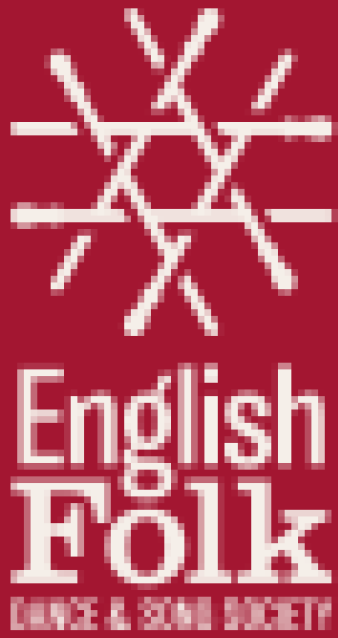-
Select/deselect all
- Archive cataloguesReveal
- Harry Albino Manuscript Collection
- Sabine Baring-Gould Manuscript Collection
- Lucy Broadwood Manuscript Collection
- Janet Blunt Manuscript Collection
- James Madison Carpenter Collection
- George Butterworth Manuscript Collection
- Francis Collinson Manuscript Collection
- Clive Carey Manuscript Collection
- Daisy Caroline Daking Manuscript Collection
- EFDSS Wax Cylinder Collection
- George Gardiner Manuscript Collection
- Anne Geddes Gilchrist Collection
- Percy Grainger Manuscript Collection
- Henry Hammond Manuscript Collection
- Maud Karpeles Manuscript Collection
- Frank Kidson Manuscript Collection
- Ella Mary Leather Manuscript Collection
- Library Street Literature Collection
- Mary Neal Manuscript Collection
- Thomas Fairman Ordish Manuscript Collection
- Cecil Sharp Manuscript Collection (at VWML)
- Cecil Sharp Manuscript Collection (at Clare College, Cambridge)
- Frank Sidgwick Manuscript Collection
- Ken Stubbs Collection
- Ralph Vaughan Williams Manuscript Collection (at VWML)
- Ralph Vaughan Williams Manuscript Collection (at British Library)
- Alfred Williams Manuscript Collection
- Song IndexesReveal
- Dance and Tune Index
- Customs and Drama Index
- Narrative and Speech Index
- Image Index
- Bibliographies and AuthoritiesReveal
- Street Literature indexesReveal
- Historic Dance and Tune booksReveal
- Anonymous MS Tunebook c1830
- Anonymous 19th Century Tunebook
- Anonymous MS Tunebook c1850
- Anonymous Tunebook
- Anonymous Tunebook
- Bray 1699
- Button and Whitaker's 1809
- Kitty Bridge's 1745 Notebook
- Button and Whitaker's 1810
- Button and Whitaker's 1818 (Le Sylphe)
- Companion to the Reticule
- Henry Huntlea's 1884 Tunebook
- Robert Harrison
- Longman's XXIV New Cotillons
- Malchair
- John Moore book 1
- John Moore book 2
- John Moore book 3
- Johnson volume 8
- Old Reels and Dance Tunes and Old Yorkshire Tunes
- Preston's 1793
- Preston's 1794
- Preston's 1796
- Preston's 1798
- Preston's 1799
- Preston's 1800
- Rutherford's compleat vol 1
- Rutherford's compleat vol 2
- Rutherford's selected
- Skene's 1838 Tunebook 1
- Skene's 1838 Tunebook 2
- Skillern's 1780
- Skillern's 1781
- Skillern's 1782
- Skillern's 1799
- Straight & Skillern's Minuets for the year 1777
- Straight's 1779
- Straight's 1783
- Straight's 1784
- Thompson's 1762
- Thompson's 1765
- Thompson's 1767
- Thompson's 1774
- Thompson's 1776
- Thompson's 1778
- Thompson's 1779
- Thompson's 1780
- Thompson's 1782
- Urbani and Listons 1800
- W. G.'s Violin Tunebook
- An Analysis of Country Dancing by T. Wilson (1808)
- The Treasures of Terpischore by T. Wilson (1809)
- Wright's Compleat Collection vol 1
- Yarker's 1797 Tunebook
- Cecil Sharp's diariesReveal
Filter by collection
Select/deselect all- Archive cataloguesReveal
- Harry Albino Manuscript Collection
- Sabine Baring-Gould Manuscript Collection
- Lucy Broadwood Manuscript Collection
- Janet Blunt Manuscript Collection
- James Madison Carpenter Collection
- George Butterworth Manuscript Collection
- Francis Collinson Manuscript Collection
- Clive Carey Manuscript Collection
- Daisy Caroline Daking Manuscript Collection
- EFDSS Wax Cylinder Collection
- George Gardiner Manuscript Collection
- Anne Geddes Gilchrist Collection
- Percy Grainger Manuscript Collection
- Henry Hammond Manuscript Collection
- Maud Karpeles Manuscript Collection
- Frank Kidson Manuscript Collection
- Ella Mary Leather Manuscript Collection
- Library Street Literature Collection
- Mary Neal Manuscript Collection
- Thomas Fairman Ordish Manuscript Collection
- Cecil Sharp Manuscript Collection (at VWML)
- Cecil Sharp Manuscript Collection (at Clare College, Cambridge)
- Frank Sidgwick Manuscript Collection
- Ken Stubbs Collection
- Ralph Vaughan Williams Manuscript Collection (at VWML)
- Ralph Vaughan Williams Manuscript Collection (at British Library)
- Alfred Williams Manuscript Collection
- Song IndexesReveal
- Dance and Tune Index
- Customs and Drama Index
- Narrative and Speech Index
- Image Index
- Bibliographies and AuthoritiesReveal
- Street Literature indexesReveal
- Historic Dance and Tune booksReveal
- Anonymous MS Tunebook c1830
- Anonymous 19th Century Tunebook
- Anonymous MS Tunebook c1850
- Anonymous Tunebook
- Anonymous Tunebook
- Bray 1699
- Button and Whitaker's 1809
- Kitty Bridge's 1745 Notebook
- Button and Whitaker's 1810
- Button and Whitaker's 1818 (Le Sylphe)
- Companion to the Reticule
- Henry Huntlea's 1884 Tunebook
- Robert Harrison
- Longman's XXIV New Cotillons
- Malchair
- John Moore book 1
- John Moore book 2
- John Moore book 3
- Johnson volume 8
- Old Reels and Dance Tunes and Old Yorkshire Tunes
- Preston's 1793
- Preston's 1794
- Preston's 1796
- Preston's 1798
- Preston's 1799
- Preston's 1800
- Rutherford's compleat vol 1
- Rutherford's compleat vol 2
- Rutherford's selected
- Skene's 1838 Tunebook 1
- Skene's 1838 Tunebook 2
- Skillern's 1780
- Skillern's 1781
- Skillern's 1782
- Skillern's 1799
- Straight & Skillern's Minuets for the year 1777
- Straight's 1779
- Straight's 1783
- Straight's 1784
- Thompson's 1762
- Thompson's 1765
- Thompson's 1767
- Thompson's 1774
- Thompson's 1776
- Thompson's 1778
- Thompson's 1779
- Thompson's 1780
- Thompson's 1782
- Urbani and Listons 1800
- W. G.'s Violin Tunebook
- An Analysis of Country Dancing by T. Wilson (1808)
- The Treasures of Terpischore by T. Wilson (1809)
- Wright's Compleat Collection vol 1
- Yarker's 1797 Tunebook
- Cecil Sharp's diariesReveal





